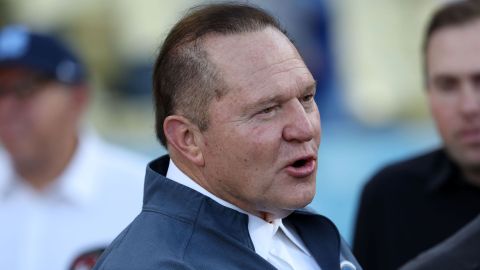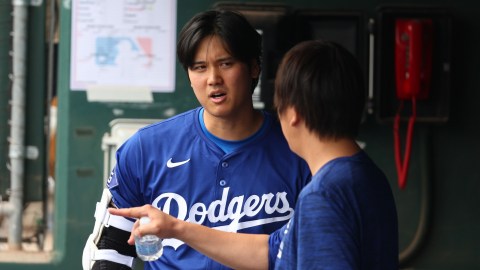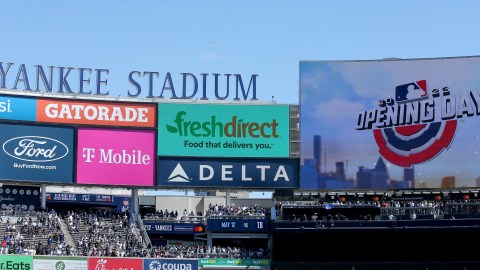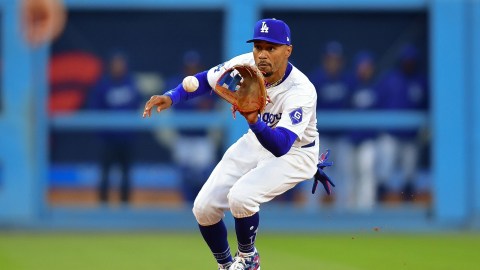Editor’s Note: NESN.com Red Sox reporter Tony Lee will examine one hot-button baseball topic each day in December. On Friday, he examined the next move for the Red Sox.
It only seems as if the Yankees have been the biggest spenders in baseball forever. In fact, they did not have the highest payroll for most of the 1990s, and only recently have run away from the pack in that regard.
In the present climate, however, the Bronx Bombers have been utilizing the power share in their massive market to gain every advantage possible. And why shouldn’t they? There are rules, and they are simply playing within them to put the best and most appealing team for their fans on the field.
After seeing the Red Sox commit roughly $300 million to two players in a flurry that reminds us that other big players in the market do persist, we ask, under the current guidelines, will anyone ever outspend the Yankees?
The current guidelines, of course, allow teams to spend all they want to, keeping in mind that a luxury tax can be implemented once their payroll goes beyond an annually determined figure. New York has surpassed that mark in six of the 11 years it has been in place, thus doling out millions that will supposedly help build the industry. Other teams, such as the Red Sox and Angels, have shown a willingness to go past the threshold on occasion.
With several massive contracts still on the Yankees’ docket and several more likely to come (Cliff Lee?), the pinstripes seem content to fly by the luxury tax mark, pay out to the small-market teams and ride a star-studded wave to the postseason. However, they have shown a reluctance to go too far beyond where they are right now in terms of payroll. Each dollar beyond the luxury tax cap is taxed, and New York has seemingly determined just how much over that line it is willing to go.
While the Yankees maintain that strategy, others have creeped forward. Since 2005, the Yankees’ Opening Day payroll has gone from $208 million to $213 million, with some fluctuations below $200 million in the middle of that period of time. That represents a miniscule 2.4 percent increase. Meanwhile, consider the surges in payroll for teams in other major markets over that same five-year span:
Red Sox: 36.1 percent
Angels: 23.9
Blue Jays: 72.1
Brewers: 127.6
Cubs: 65.9
Dodgers: 22.9
Mets: 24.9
Phillies: 44.7
Rangers: 16.1
Rays: 145.1
Reds: 23.1
Rockies: 74.9
Tigers: 93.9
Twins: 73.8
White Sox: 37.1
That group includes half of Major League Baseball, and several of the biggest markets in the game, each of which is obviously gaining on the Yankees. Not many are even in New York’s stratosphere, but with the Yanks seemingly slowing their pace, the pack could catch them soon.
New York has always been near the top in this category, but not always at it. As recently as 1998, the year the club won 114 games and steamrolled to an easy World Series title over San Diego, it did not have the highest Opening Day payroll in the game. It has had that top spot since 1999, but did not gain any separation from the pack — a pack which always included the Red Sox — until about 2003. As recently as 2001, the two rivals were split by less than $3 million on Opening Day.
The middle of the first decade of the 21st century was when the Yankees really opened their wallets, and while they continue to outspend everyone, they are at a point where going too far beyond the annual luxury tax threshold is not possible. New York was the first to race past that mark. In time, if the current rates at which clubs are increasing payrolls (this offseason’s players market can only help in that pursuit), the Yankees could have more company in that pool and perhaps a challenger for the title of top spender.
Don’t count on it, though.
Under the current guidelines, do you think anyone ever outspend the Yankees? Leave your comments below.
On deck: Do any teams have the potential to develop into a dynasty in the next five years?



